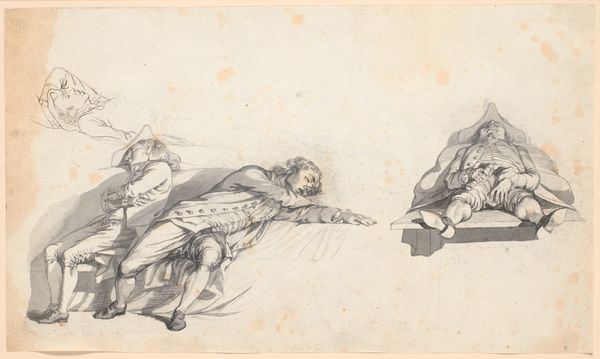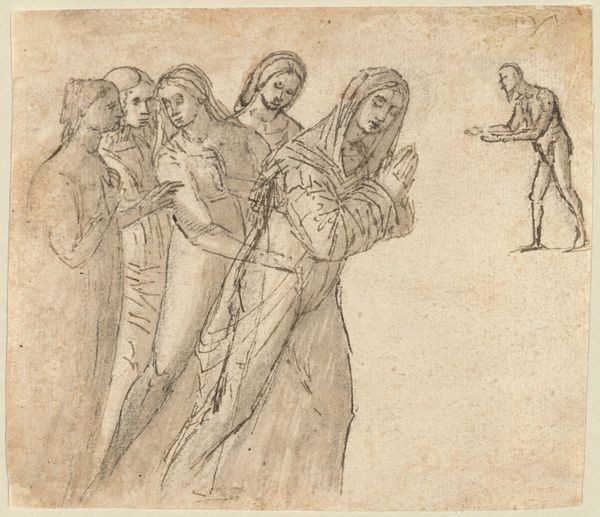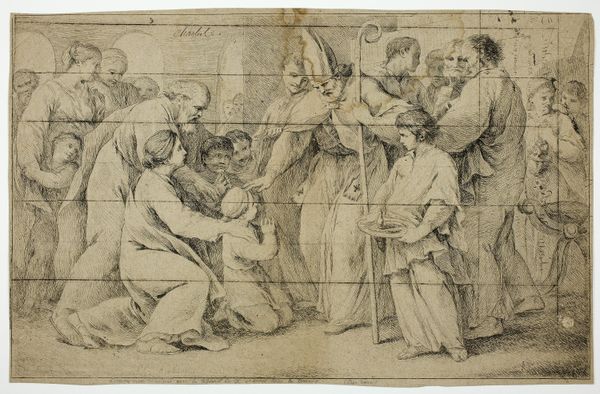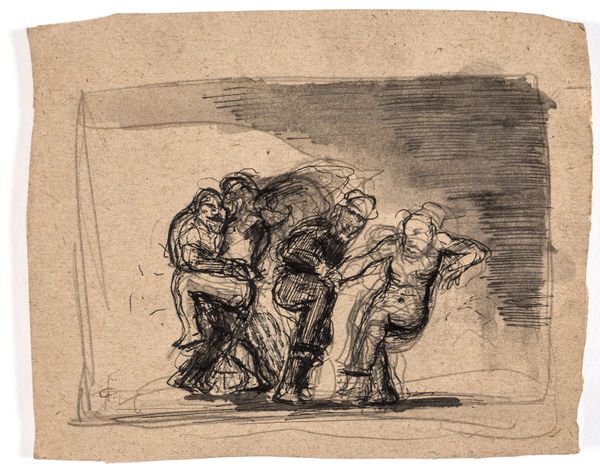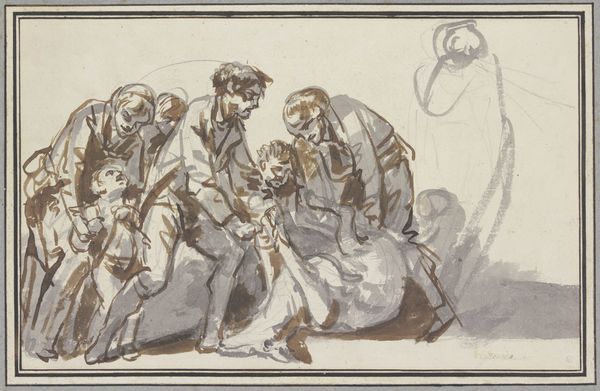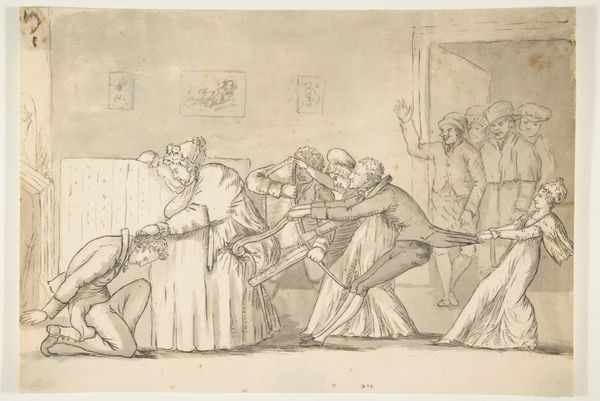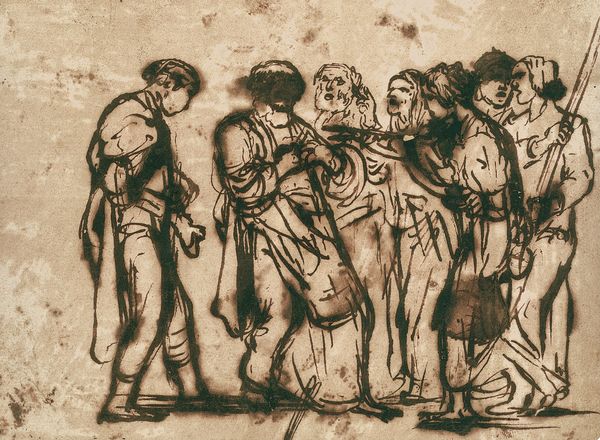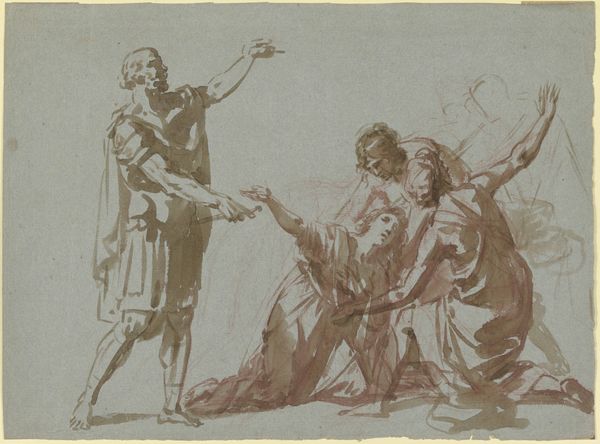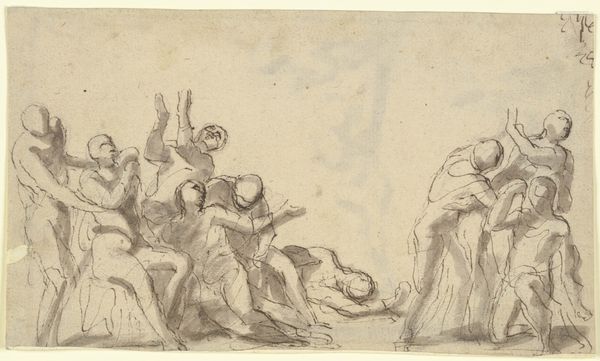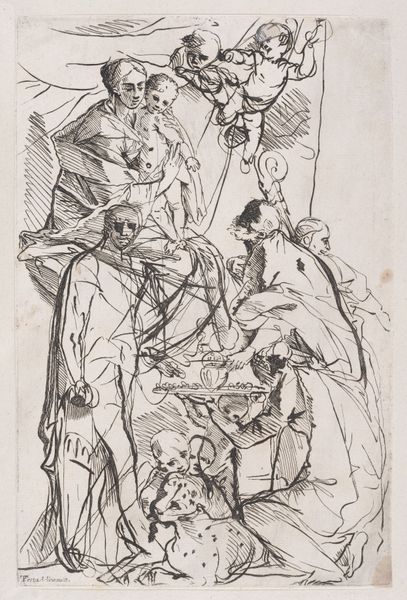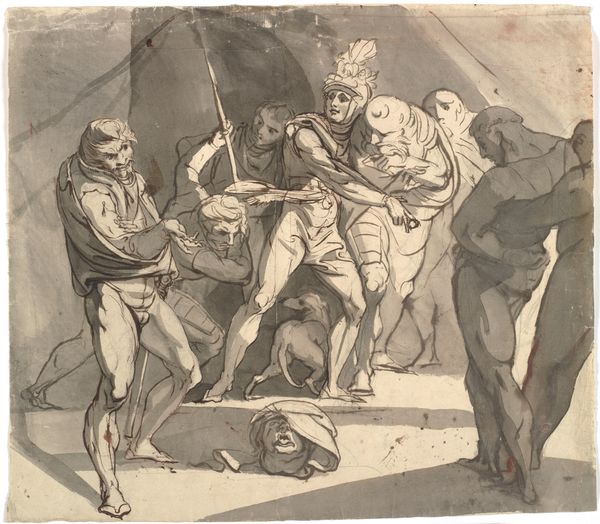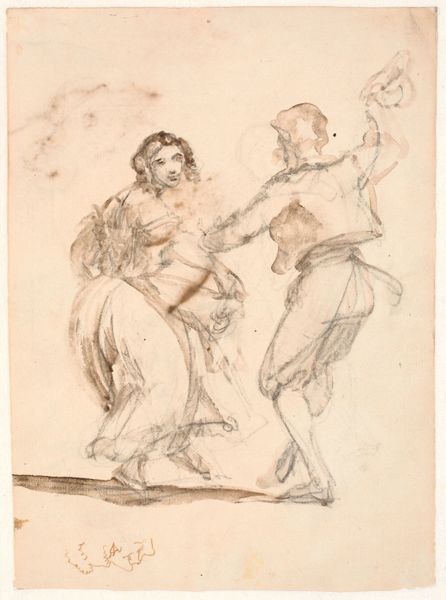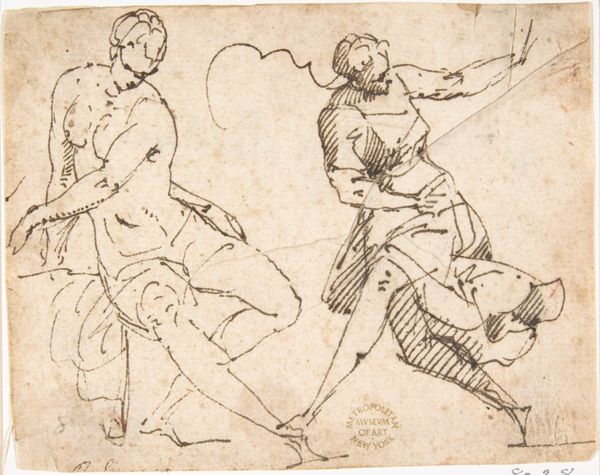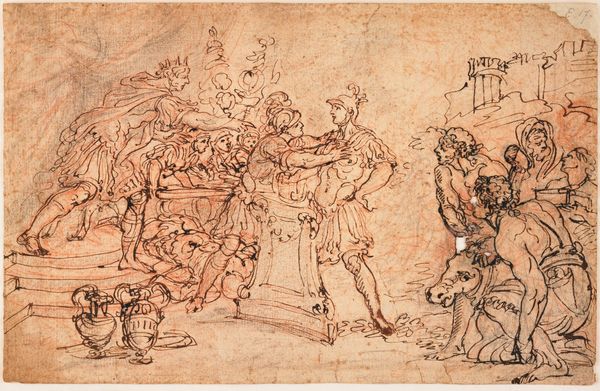
drawing, tempera, paper, ink
#
drawing
#
tempera
#
figuration
#
paper
#
ink
#
history-painting
#
italian-renaissance
Dimensions: 193 mm (height) x 304 mm (width) (bladmaal)
Curator: Ah, there’s a raw, almost theatrical quality to this drawing. Editor: It's certainly emotionally charged. We are looking at "Besøgelsen," or "The Visitation" if you prefer, rendered between 1555 and 1619 by Giovanni Battista Trotti. It's done with ink and tempera on paper and housed right here at the SMK. Curator: "Visitation," huh? Immediately I see these figures embracing, this urgency, but there's something else tugging at me. A bit melancholic. Are they scared, or just really, really happy to see each other? The old guy, kneeling, seems to be on his way down! What could this scene possibly be about? Editor: Well, within the history of Renaissance art, "The Visitation" illustrates the meeting of Mary and Elizabeth, both pregnant; Mary with Jesus, and Elizabeth with John the Baptist. The older man you mentioned would then be Elizabeth's husband, Zechariah. Their stories run parallel. And it becomes especially compelling, socially, when you recall that this moment acknowledges the divine sanctioning of female bonds outside male dominance, offering an important historical counterpoint. Curator: You're right, that exchange they share just hums with the weight of destiny, like a secret language spoken only between future mothers of legends. Also, the dynamism Trotti creates—that forward momentum, the folds of fabric practically leaping off the paper—is exhilarating. I am also sensing this strong Renaissance drive towards harmony, expressed here through very dynamic visual storytelling and figure gesture. Editor: That dynamism aligns perfectly with the political needs of the era. Remember, the Church was a significant patron, and these images served as public reinforcement of its teachings, particularly as challenges from the Reformation mounted. "The Visitation," especially, visually confirmed pivotal religious tenets. Curator: It's true. Art always serves a purpose, sometimes several. It’s fascinating to unravel how an artwork’s creation ties into the needs of patrons, institutions, and societies. Now when I look back, that's quite moving for its time, you feel all these hopes and beliefs wrapped into pigment and ink... Editor: Indeed. It’s a testament to the lasting power of art and our own role in interpreting this shared human experience.
Comments
No comments
Be the first to comment and join the conversation on the ultimate creative platform.
